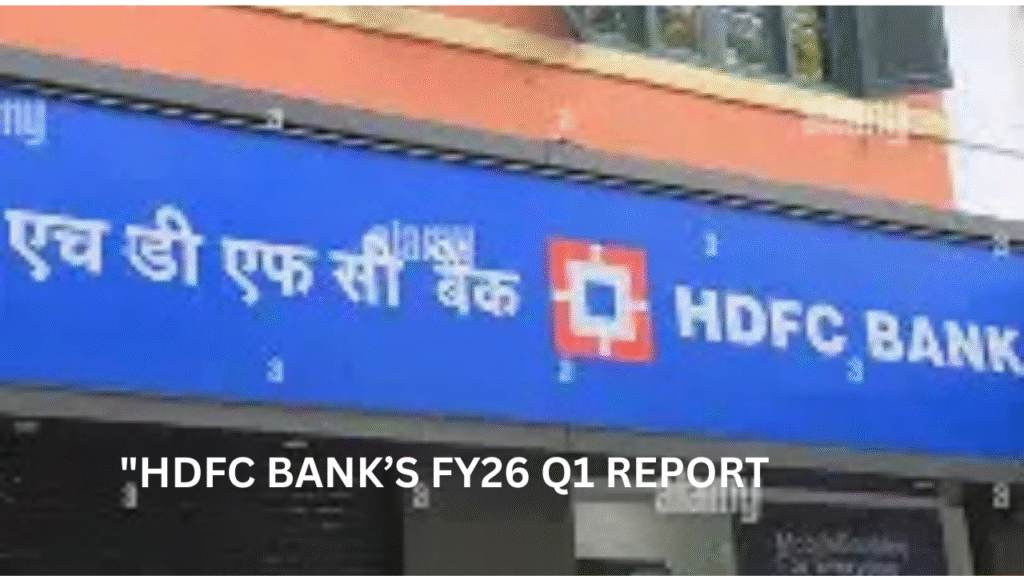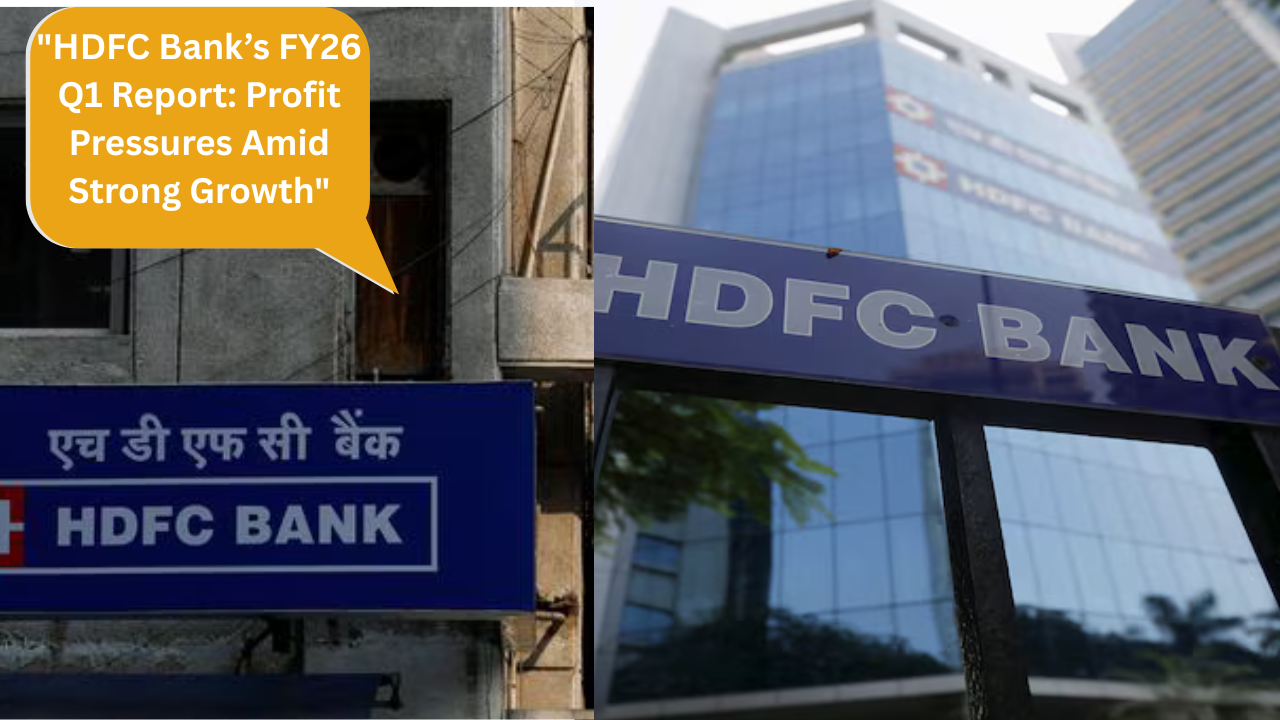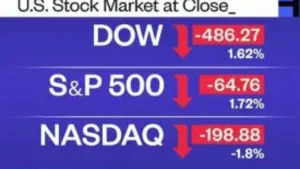With some significant gains offset by a few disappointments, HDFC Bank’s start to FY26 was somewhat of a rollercoaster. On the one hand, steady revenue growth and a robust increase in deposits indicated that consumer confidence held steady.
As per a regulatory filing on Saturday, the bank reported a 1.31% dip in consolidated net profit to ₹16,258 crore for the quarter ended June 30, 2025, compared to ₹16,475 crore in the same period a year earlier.
The bank’s robust start to the new fiscal year was demonstrated by HDFC Bank’s revenue, which jumped to ₹99,200 crore in the first quarter of FY26 — a substantial increase from ₹83,701 crore in the same period last year. However, the growth was somewhat offset by higher operating costs, which rose to ₹63,467 crore from ₹59,817 crore during the same quarter last year.
🧾 Net Profit: A Mixed Performance
As per a regulatory filing on Saturday, the bank reported a 1.31% dip in consolidated net profit to ₹16,258 crore for the quarter ended June 30, 2025, compared to ₹16,475 crore in the same period a year earlier.
Interestingly, on a standalone basis, the bank clocked a net profit of ₹18,155 crore, up from ₹16,174 crore a year ago — indicating strong core banking performance even as consolidated numbers were affected by higher provisions and market movements.
💰 Revenue & Operating Costs

The bank’s robust start to the new fiscal year was demonstrated by HDFC Bank’s revenue, which jumped to ₹99,200 crore in the first quarter of FY26 — a substantial increase from ₹83,701 crore in the same period last year. However, the growth was somewhat offset by higher operating costs, which rose to ₹63,467 crore from ₹59,817 crore during the same quarter last year.
📉 Net Interest Margin Under Pressure
HDFC Bank came under pressure this quarter as rising funding costs weighed on its Net Interest Margin (NIM) — a critical indicator of profitability that showed signs of strain and drew attention from market watchers. The bank’s NIM decreased from 3.46% to 3.35% compared to the first quarter of the previous year.
This suggests that profitability is under strain as the cost of raising capital is increasing more quickly than the yield on loans.
🗣️ CEO Insight: Interest Rate Impact Still Pending
CEO Sashidhar Jagdishan Vaidyanathan noted that although interest rates are likely to decline further, the benefits from rate cuts and deposit repricing may take another one or two quarters to fully show up in the bank’s performance.
🚨 Surge in Provisions Signals Conservative Stance
The substantial jump in provisions stood out as a key highlight in HDFC Bank’s Q1 FY26 performance. A more cautious approach as it prepares for any credit stress is seen in the bank’s allocation of ₹14,442 crore this quarter — a significant increase from ₹2,602 crore during the same period last year.
Of this, ₹9,000 crore was earmarked as a floating buffer — a clear sign that the bank is preparing cautiously for potential stress in the quarters ahead.
This quarter, the bank adopted a conservative approach, primarily in reaction to a sharp increase in loan slippages that reached ₹9,000 crore. A significant chunk of that — around ₹2,200 crore — came from the agriculture portfolio. However, such defaults are often seasonal, especially in the first and third quarters, due to the unpredictable nature of farm incomes.
“Outside of the agri book, slippages have remained fairly stable,” said Vaidyanathan, adding that performance across retail, SME, and wholesale loan segments has been consistent.
🧍 Asset Quality Slightly Deteriorated, but Stability Was Preserved
This quarter, HDFC Bank’s asset quality somewhat declined, mostly due to an increase in loan slippages. The net non-performing asset (NPA) increased slightly from 0.4% to 0.5% by June 2025, while the gross NPA ratio increased marginally from 1.33% in March to 1.4%.
Despite the minor increase, the movement is indicative of early stress — especially in industries like SME loans and agriculture. Nevertheless, the bank seems well-positioned to manage the situation, thanks to proactive provisioning and strong risk buffers in place.
📊 Consistent Loan Growth, Retail Credit Provides Fuel
HDFC Bank continued to issue loans at a steady pace despite the elevated provisioning levels. By the end of the quarter, HDFC Bank’s total advances rose 6.7% YoY to ₹26.5 lakh crore. The retail segment played a major role in driving this growth, reflecting both strong consumer demand and a continued focus on a balanced lending portfolio.
Breakdown of retail loan segments:
Personal loans: 30%
Auto and two-wheeler loans: 24%
Payment-related lending: 17%
The mortgage book also posted a 7% YoY increase, although the bank remained selective in this area due to intense pricing competition from public sector banks.
“We want holistic customer relationships, not just lending. Nearly 99% of new mortgages are accompanied by savings accounts,” Vaidyanathan noted.
🌐 Wholesale Lending Still Cautious
HDFC Bank remained cautious when it came to lending to large corporates, citing ongoing pricing pressure and tepid demand in the segment. Vaidyanathan stated that the bank is being selective and waiting for more favorable market conditions.
“We like the quality, but we’re waiting for better pricing before accelerating lending to large corporates,” he said.
💰 Deposits Surge, But CASA Weakens
A major positive in Q1 was the surge in deposits. Total deposits rose 16.2% YoY to ₹27.64 lakh crore, led by robust growth in time deposits. However, the CASA (Current and Savings Account) ratio declined to 33.9% from 38.2% a year ago, indicating a shift in customer preference toward higher-yielding fixed deposits.
Savings account deposits stood at ₹6.39 lakh crore
Current account deposits were at ₹2.98 lakh crore
This shift away from low-cost deposits also contributes to the margin compression the bank is facing.








